The Best Corned Beef and Cabbage Recipe for St. Patrick’s Day
My grandma’s secret corned beef and cabbage recipe always sparks conversation at our family gatherings.
Memories of Ireland dance through her traditional cooking method.
Tender meat practically melts when prepared with careful attention.
Generations have cherished these authentic flavors passed down through decades.
Robust seasonings infuse each bite with rich, hearty goodness.
Hearty ingredients promise a comforting meal that connects us to cultural roots.
She taught me making this dish isn’t just cooking, it’s storytelling on a plate.
Corned Beef And Cabbage For A Classic Comfort Meal
Core Items In Corned Beef And Cabbage
Meat:Root Vegetables:Green Vegetable:Corned Beef And Cabbage Cooking Method
Step 1: Prep the Brisket
Place the corned beef brisket into a spacious pot or Dutch oven.
Fill the pot with water, ensuring the meat is completely submerged.
Step 2: Spice and Simmer
Sprinkle the included spice packet over the brisket.
Cover the pot with a lid and bring the water to a rolling boil.
Immediately reduce the heat to a gentle simmer and let the meat cook for two full hours.
Step 3: Add Root Vegetables
Gently introduce whole potatoes and carrots into the simmering liquid.
Continue cooking until the vegetables start to soften but aren’t completely tender.
Step 4: Introduce Cabbage
Carefully place chunks of cabbage into the pot.
Allow everything to cook together for an additional 15 minutes, letting the cabbage absorb the delicious flavors.
Step 5: Rest and Slice the Meat
Remove the corned beef from the pot and let it rest for 15 minutes.
This helps the meat retain its juices.
Using a sharp knife, slice the brisket against the grain to ensure maximum tenderness.
Step 6: Plate and Serve
Arrange the sliced corned beef on a serving platter surrounded by the cooked vegetables.
Ladle some of the flavorful broth over the top if desired.
Enjoy your hearty and traditional Irish-inspired meal!
Handy Hints for Corned Beef and Cabbage
Corned Beef And Cabbage Reheats Best With This Method
Side Ideas for Corned Beef and Cabbage
Corned Beef and Cabbage Edits
FAQs
A traditional Irish-American dish made from beef brisket cured in large rock salt crystals (called “corns”), which gives the meat its distinctive flavor and pink color.
You can create your own spice blend using peppercorns, bay leaves, mustard seeds, and garlic to replicate the traditional flavor profile if the packet is missing.
The meat should be tender and easily pierced with a fork, typically reaching an internal temperature of 145°F for medium rare and 160°F for medium doneness.
Cutting perpendicular to the muscle fibers makes the meat more tender and easier to chew, preventing a tough or stringy texture in your final dish.
Print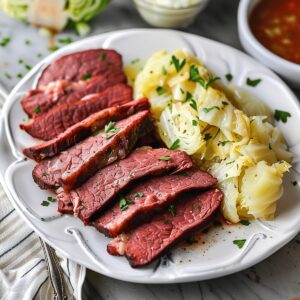
Corned Beef and Cabbage Recipe
- Total Time: 3 hours 15 minutes
- Yield: 6 1x
Description
Irish corned beef and cabbage delivers hearty comfort straight from traditional kitchens of Ireland. Savory meat melts alongside tender vegetables, promising a satisfying meal that connects generations with simple, robust flavor you’ll crave.
Ingredients
Main Protein:
- 1 (3-pound) corned beef brisket with spice packet
Vegetables:
- 10 small red potatoes
- 5 medium carrots
- 1 large head cabbage
Instructions
- Immerse the corned beef brisket in a spacious pot, ensuring it’s completely submerged in cool water.
- Sprinkle the accompanying spice blend over the meat, secure the lid, and elevate the temperature until the liquid reaches a rolling boil.
- Diminish the heat to a gentle simmer, allowing the meat to tenderize and absorb flavors for approximately two hours.
- Carefully introduce whole potatoes and carrots into the simmering liquid, continuing to cook until the root vegetables approach a soft, yielding texture.
- Introduce chopped cabbage wedges to the pot, letting them nestle among the meat and other vegetables.
- Continue cooking for an additional quarter-hour, ensuring the cabbage becomes translucent and tender without losing its structural integrity.
- Carefully extract the corned beef from the fragrant broth, transferring it to a cutting board to rest and settle for a short period.
- Using a sharp knife, slice the meat perpendicular to the natural grain, creating clean, uniform pieces that will maintain tenderness.
- Arrange the sliced corned beef alongside the perfectly cooked vegetables on a serving platter, optionally ladling some of the rich, aromatic broth around the dish for added moisture and flavor.
Notes
- Choose a high-quality, flat-cut corned beef brisket for more even cooking and tender meat.
- Rinse the corned beef before cooking to reduce excess saltiness and remove surface brine.
- Trim visible excess fat to control the overall richness of the dish, leaving a thin layer for flavor.
- For a lighter version, swap traditional beef with lean turkey or chicken corned meat to reduce calories and fat content.
- Prep Time: 15 minutes
- Cook Time: 3 hours
- Category: Lunch, Dinner
- Method: Simmering
- Cuisine: Irish
Nutrition
- Serving Size: 6
- Calories: 300
- Sugar: 3g
- Sodium: 800mg
- Fat: 15g
- Saturated Fat: 6g
- Unsaturated Fat: 7g
- Trans Fat: 0g
- Carbohydrates: 30g
- Fiber: 5g
- Protein: 20g
- Cholesterol: 70mg

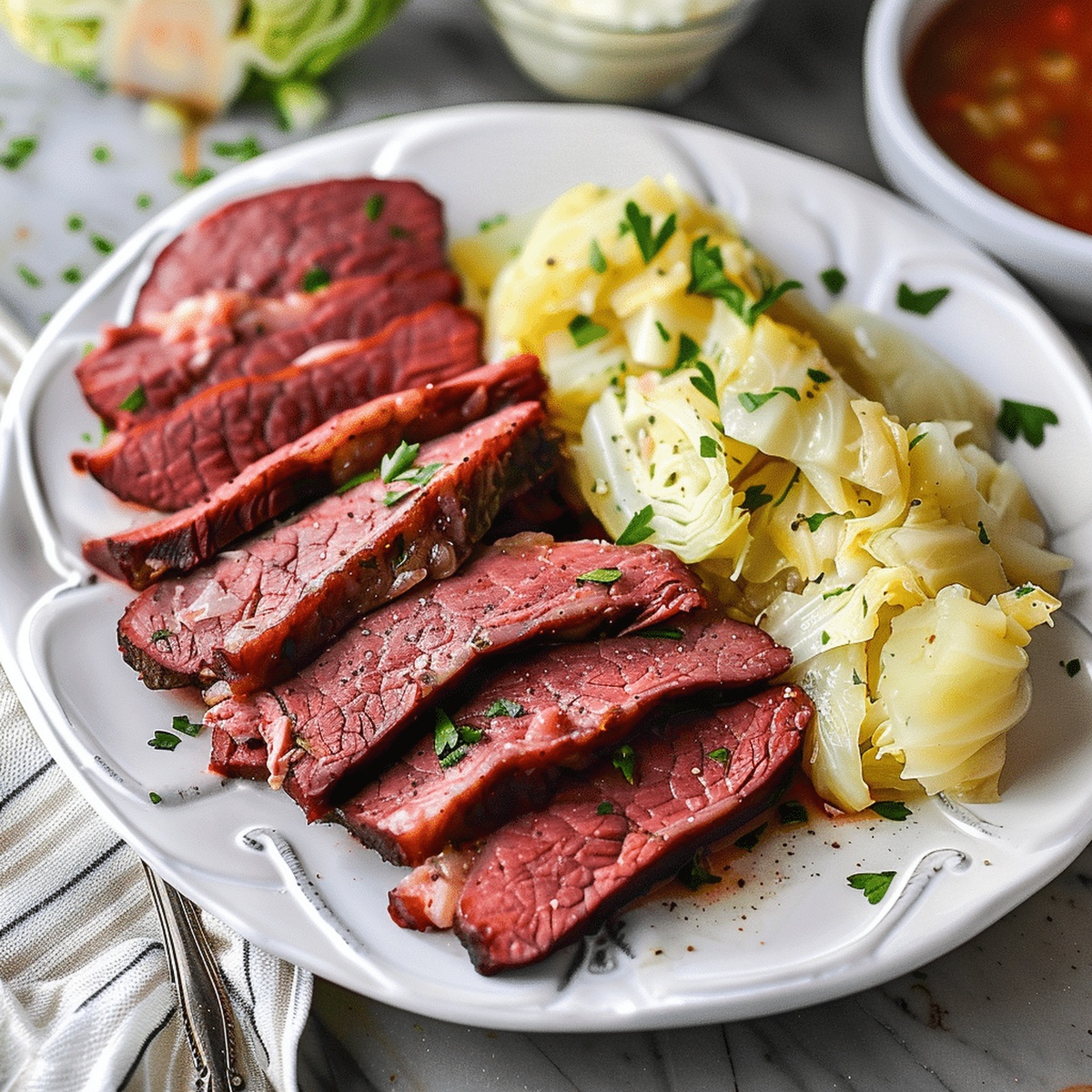
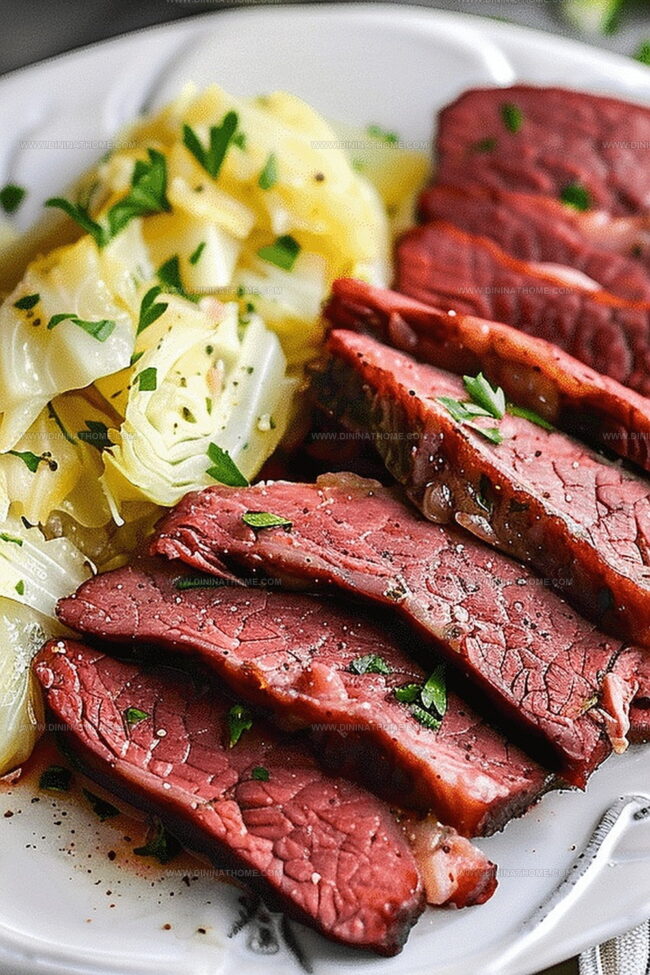
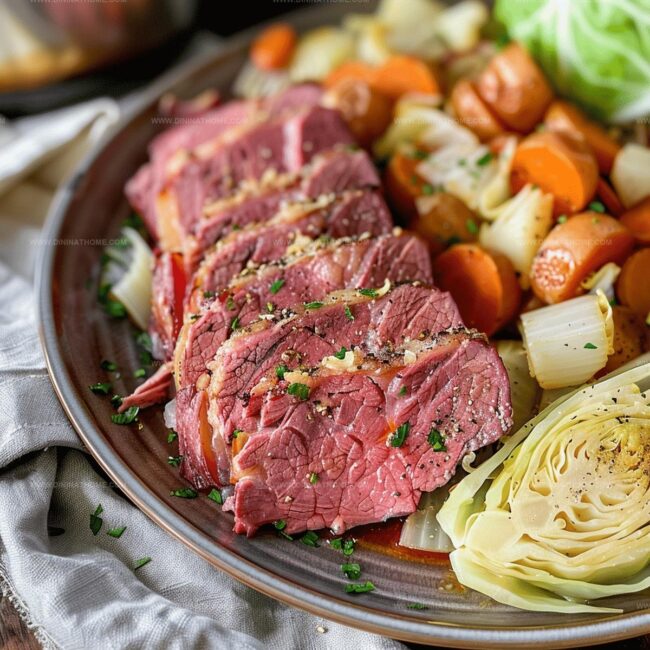
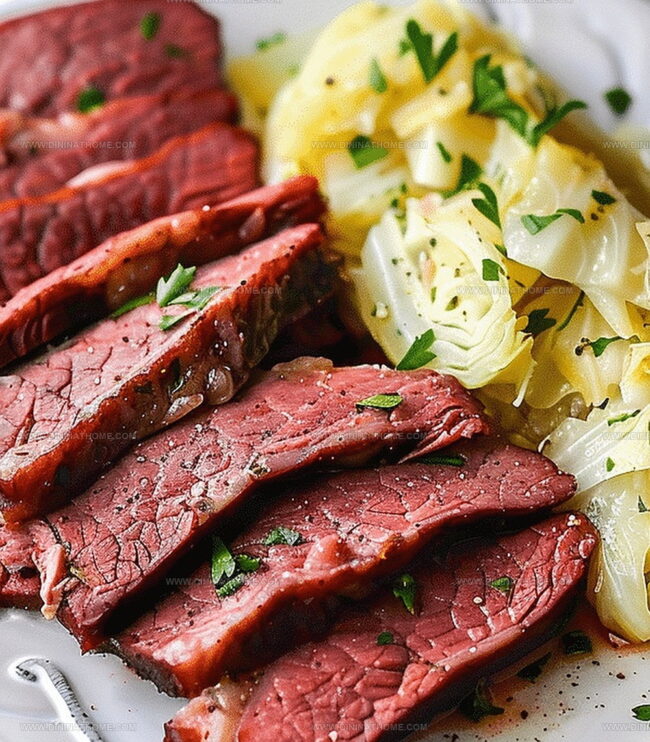
Emily Harper
Nutrition Consultant & Recipe Analyst
Expertise
Healthy Recipe Modification, Nutritional Analysis & Meal Planning, Global Cuisine & Dietary Adaptations
Education
School: French Pastry School, Chicago, IL
Program: L’Art de la Pâtisserie
Focus: Intensive training in traditional French pastry techniques, baking theory, and confectionery arts.
Emily’s journey started in a pastry kitchen but took a detour into the world of health and flavor science.
Graduating from the French Pastry School and studying nutrition opened her eyes to a new mission: making healthy food taste like something you’d actually crave.
At Dining At Home, Emily’s the go-to for smart, feel-good recipes that don’t trade flavor for nutrition.
She’s all about adding a fresh spin on old favorites and finding small ways to make everyday meals a little brighter.
Outside of the kitchen, Emily is most at home walking forest trails, testing plant-based recipes, or sharing a picnic under a wide-open sky.